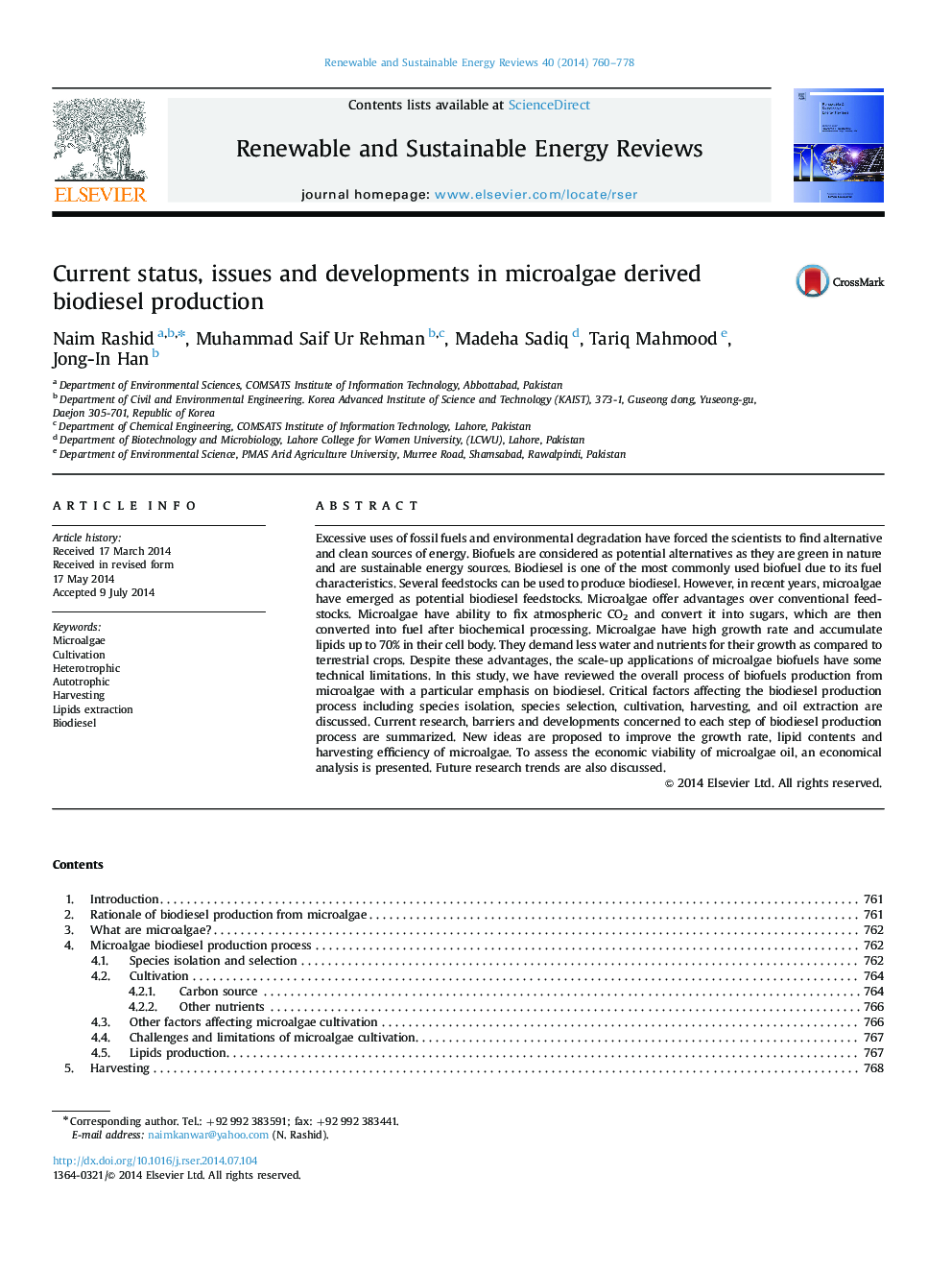| Article ID | Journal | Published Year | Pages | File Type |
|---|---|---|---|---|
| 8118924 | Renewable and Sustainable Energy Reviews | 2014 | 19 Pages |
Abstract
Excessive uses of fossil fuels and environmental degradation have forced the scientists to find alternative and clean sources of energy. Biofuels are considered as potential alternatives as they are green in nature and are sustainable energy sources. Biodiesel is one of the most commonly used biofuel due to its fuel characteristics. Several feedstocks can be used to produce biodiesel. However, in recent years, microalgae have emerged as potential biodiesel feedstocks. Microalgae offer advantages over conventional feedstocks. Microalgae have ability to fix atmospheric CO2 and convert it into sugars, which are then converted into fuel after biochemical processing. Microalgae have high growth rate and accumulate lipids up to 70% in their cell body. They demand less water and nutrients for their growth as compared to terrestrial crops. Despite these advantages, the scale-up applications of microalgae biofuels have some technical limitations. In this study, we have reviewed the overall process of biofuels production from microalgae with a particular emphasis on biodiesel. Critical factors affecting the biodiesel production process including species isolation, species selection, cultivation, harvesting, and oil extraction are discussed. Current research, barriers and developments concerned to each step of biodiesel production process are summarized. New ideas are proposed to improve the growth rate, lipid contents and harvesting efficiency of microalgae. To assess the economic viability of microalgae oil, an economical analysis is presented. Future research trends are also discussed.
Related Topics
Physical Sciences and Engineering
Energy
Renewable Energy, Sustainability and the Environment
Authors
Naim Rashid, Muhammad Saif Ur Rehman, Madeha Sadiq, Tariq Mahmood, Jong-In Han,
